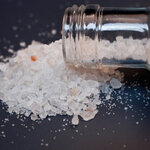Pharmacology

Most people believe – and have been told by health professionals – that it’s essential to finish a course of antibiotics to prevent antibiotic resistance.
But this advice is not only wrong, it could actually be harmful.
The idea that you have to take all the antibiotics you’re prescribed is based on the assumption that all the bacteria causing the infection have to be killed, so the surviving minority don’t become resistant.
In fact, for most otherwise healthy people, significantly reducing, but not necessarily totally eliminating, the bacteria causing the infection allows the body’s…

Malaria is a critical health problem in West Africa, 11 percent of deaths are related to it, but for a variety of reasons they have more confidence in alternative medicine than they do modern health care practices.
However, some herbal medicines work and an analysis of the pharmacological properties of an herbal medication derived from Cochlospermum planchonii (a shrubby weed known as N'Dribala), Phyllanthus amarus and Cassia alata shows that it may be the case with SAYE, which means “jaundice” in the Dioula language.
When combined with leaves and aerial portions of the latter two…

A liquid form of marijuana shows promise as a treatment for children with severe epilepsy, according to a study released today which involved 213 people, ranging from toddlers to adults, with a median age of 11 who had severe epilepsy that did not respond to other treatments.
Participants had Dravet syndrome and Lennox-Gastaut syndrome, epilepsy types that can lead to intellectual disability and lifelong seizures, as well as 10 other types of severe epilepsy.
The participants were given the drug cannabidiol, a component of marijuana that does not include the psychoactive part of the…

Botulinum toxin, produced by the bacterium Clostridium botulinum, is one of the most poisonous biological substances known, but in true' the dose makes the poison' fashion, Botulinum neurotoxin serotype A , commonly known as Botox - took C. botulinum
from being known for the serious paralytic illness Botulism to smoothing out wrinkles due to its paralytic effect.
It's been used for decades with no serious side effects and outside cosmetic surgery is also useful for the treatment of over-active muscles and spasticity, because it promotes local and long-term paralysis, but…

This week Hilary Clinton and Marco Rubio announced their candidacies for President of the United States. This puts them alongside Jeb Bush, Scott Walker and I’m not sure who else.
One thing all these candidates have in common is that not one of them has mentioned antibiotics – at least as far as I know. Do any of you know anything different?
So here we are. Antibiotic resistance is killing a minimum of 23,000 Americans every year according to the CDC. (I think that is a gross underestimate of reality.) The FDA just published a study showing large increase in antibiotic use on US farms – but…

It’s not often that medievalists get as excited as they have been over the revival of a medieval remedy for eye conditions involving garlic, onions, wine and ox gall, prepared in a bronze vessel. The concoction, mixed up by a team from Nottingham University, appeared to show promising results in the battle against MRSA. It didn’t kill it all, but it apparently killed 90%. This has revived enthusiasm for trawling ancient texts for the solutions to modern problems.
The remedy comes from Bald’s Leechbook, a 10th-century manuscript, and the powers of the separate ingredients of the remedy have…

The appearance of another questionable "dietary supplement" story in the news is about as surprising as the sun rising in the east. But this one is different.
This is front page news all over the place, including a piece by Anahad O'Connor of The New York Times. O'Connor focuses on the FDA's failure to take action against companies which sold supplements containing an untested chemical stimulant called BMPEA, aka beta-methylphenethylamine, even though the agency knew about it two years ago.
You probably haven't heard of BMPEA, but you surely have heard about …

Flakka - "gravel" - is all the rage with amateur druggies in Florida and Texas and wherever else people who have watched a lot of "Breaking Bad" do home chemistry. It is made from alpha-PVP, which is a chemical cousin of cathinone, found in bath salts.
Cathinone is banned but alpha-PVP is not, because it is not the same compound. Like bath salts, some people have become prone to violent behavior. And usage is up almost 800 percent because it is cheap, $5 a pop, note Jessica Orwig and Erin Brodwin at Business Insider.
If you want to know why good cold medicine keeps getting put behind the…

Therapeutic anti-cancer vaccines developed to treat metastatic disease such as advanced prostate cancer or melanoma don'thave a noticeable effect on the tumor but are linked to a statistically significant increase in patient survival.
For that reason, "overall survival" rather than "progression-free survival" should be the gold standard for evaluating the efficacy of cancer vaccines in clinical trials, according to a new editorial in Cancer Biotherapy and Radiopharmaceuticals.
Robert O. Dillman, MD, NeoStem, Inc. differentiates between the two key endpoints typically used to assess…

Patients with chronic kidney disease may be treated with a class of medications called Renin Angiotensin Aldosterone System inhibitors (RAASI's) but though they protect the heart and kidney, a significant percentage of patients develop a dangerous side effect; high potassium levels in the blood, a condition known as hyperkalemia.
Elevated potassium puts patients at risk of death from cardiac arrhythmias. Lacking a drug to treat the problem, doctors either stop these beneficial drugs or may use kidney dialysis to quickly lower the potassium.
It is estimated that more than 20 million…